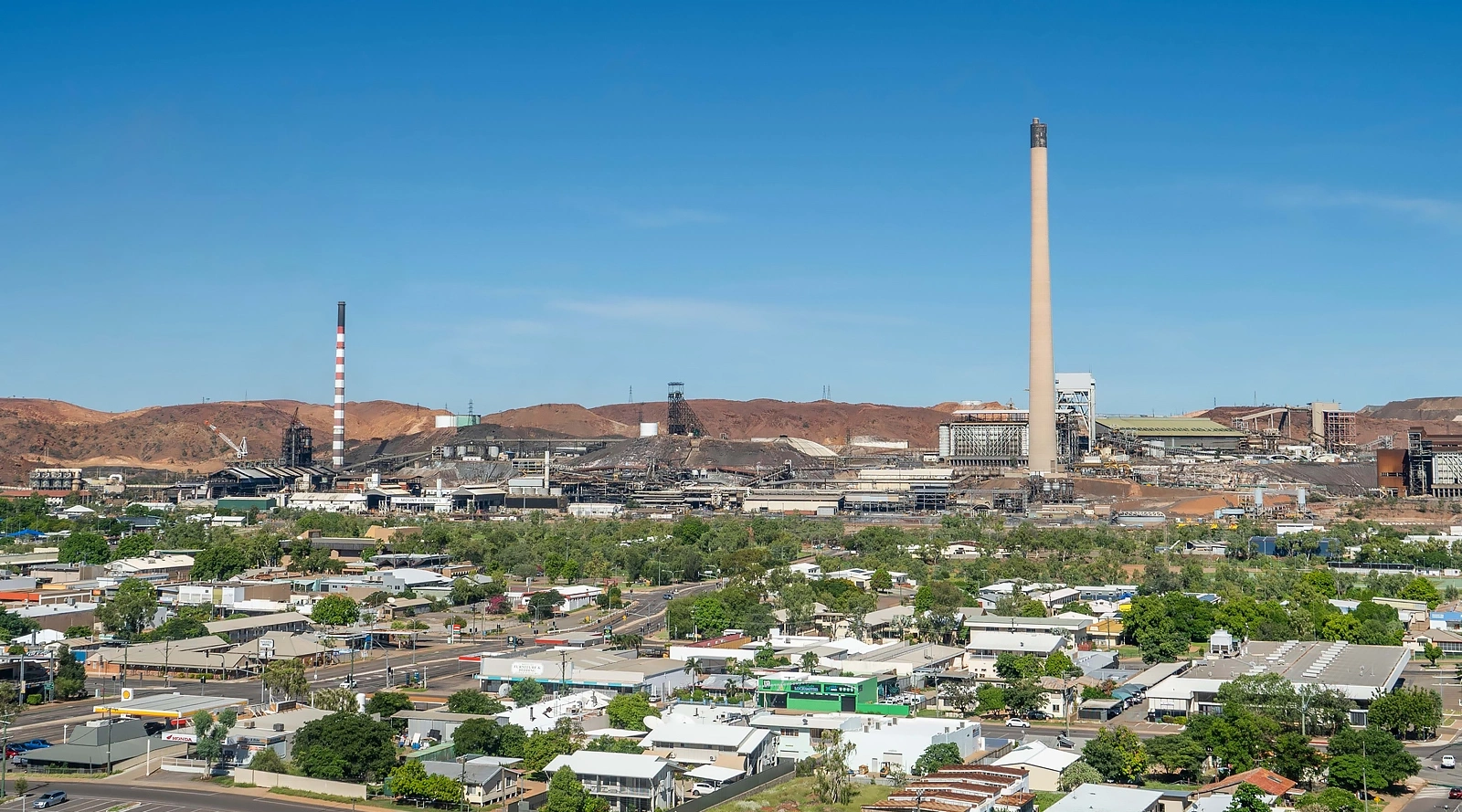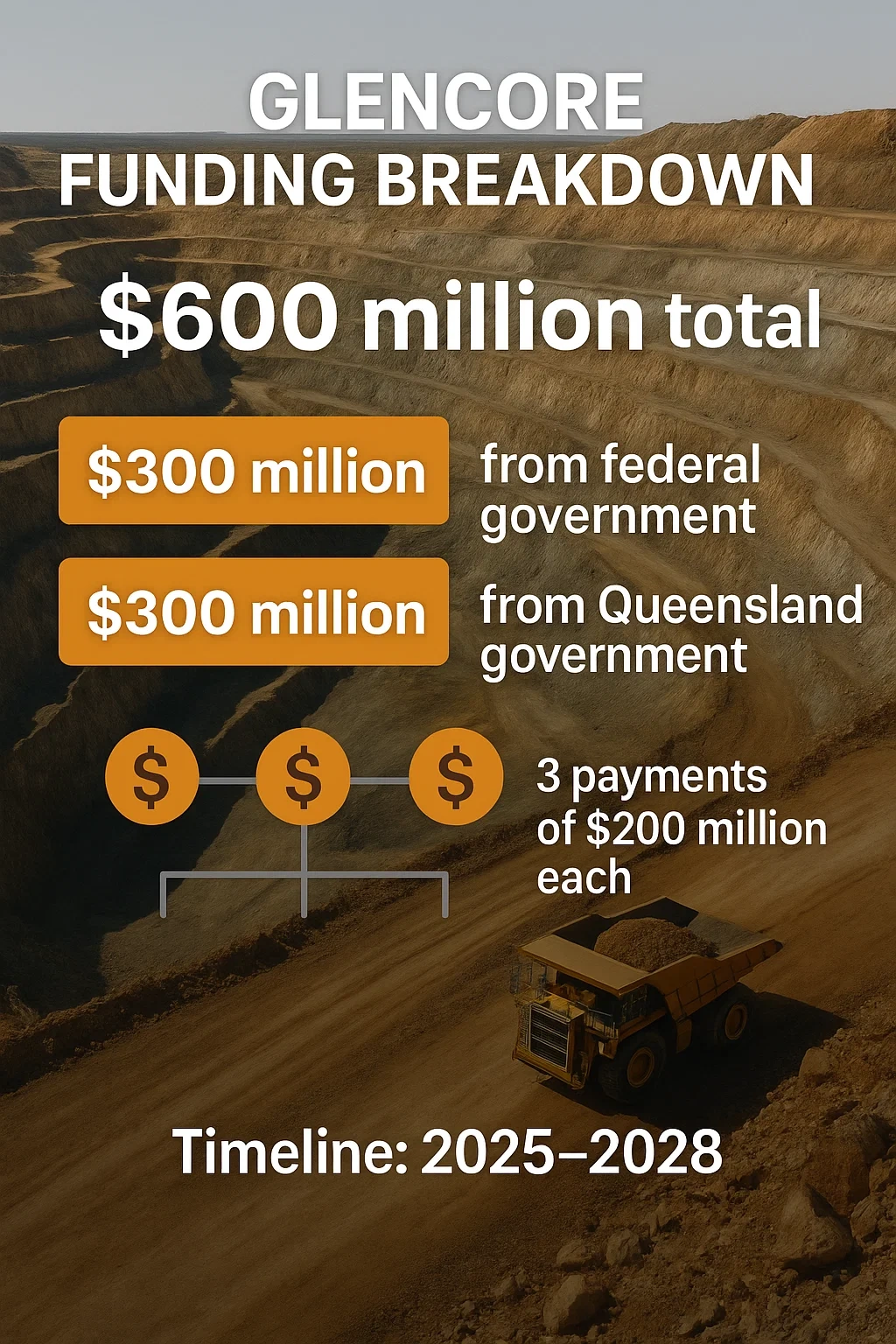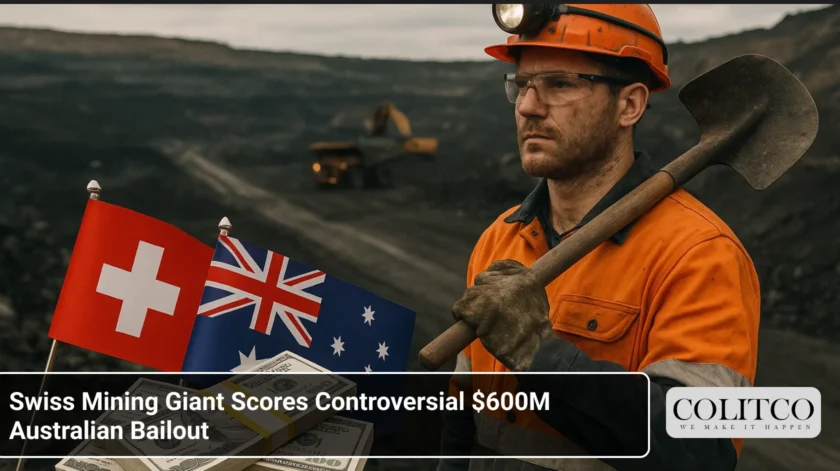Australian taxpayers will fund Swiss mining behemoth Glencore to the tune of $600 million over three years to prevent the closure of critical copper facilities in Queensland. The announcement, made Wednesday 8 October 2025, ends eight months of tense negotiations that left thousands of workers and regional communities hanging in the balance.
Federal Industry Minister Tim Ayres and Queensland Resources Minister Dale Last revealed the funding package during a visit to Mount Isa. The deal keeps the Mount Isa copper smelter and Townsville refinery operational until the end of 2028.
From $2 Billion Request to $600 Million Reality
Glencore initially sought a far more substantial support package. North West Weekly first reported in May that CEO Gary Nagle pitched $2 billion over 10 years to Queensland Premier David Crisafulli.
The Premier wasn’t impressed. Government sources described the room’s surprise at the $200 million annual subsidy request.
Mount Isa mayor Peta MacRae questioned whether taxpayers should shoulder such a burden. “We need a smelter – whether it is this smelter or whether it is a new smelter as some sort of common user facility,” she said.
The final agreement represents 70% less than Glencore’s opening bid. The $600 million will be split equally between federal and state governments in three tranches of $200 million.
 Mount Isa copper smelter provides half of Australia’s copper smelting capacity
Mount Isa copper smelter provides half of Australia’s copper smelting capacity
What Glencore Must Deliver
The funding comes with strings attached. Glencore must prove the facility can achieve financial sustainability beyond 2028. The company must also complete a transformation study demonstrating further industrial opportunities in the region.
Queensland has been clear: the money won’t cover operational costs or compensate for Glencore’s losses. It’s bridge funding, not a blank cheque.
Key conditions include:
- Completion of essential “re-bricking” maintenance
- Evidence of long-term viability planning
- Regional economic development commitments
- Quarterly review checkpoints
The 2026 re-bricking alone costs approximately $30 million. This essential maintenance involves replacing 60,000 specialised bricks and occurs every four years.
Jobs on the Line
According to Glencore, 600 workers across both sites face an uncertain future. But the ripple effects extend much further.
Townsville Enterprise estimates 17,000 jobs connect to these operations throughout the regional supply chain. Federal MP Bob Katter warned the closures would be “catastrophic” for North Queensland.
The July shutdown of Mount Isa’s underground copper mine already cost 500 direct jobs. The smelter closure would have delivered a second devastating blow within months.
“You can’t have a Future Made in Australia without the ability to refine our own metals and critical minerals,” said Australian Workers’ Union National Secretary Paul Farrow.
Strategic National Interest
The Mount Isa smelter provides roughly half of Australia’s copper smelting capacity. It’s one of only two copper smelters in the country, alongside BHP’s Olympic Dam in South Australia.
Minister Ayres emphasised copper’s critical role in renewable energy infrastructure. “Copper is critical to developing future technologies on our shores,” he stated.
The smelter represents a significant piece of national infrastructure for Australia’s minerals sovereignty. With global competition intensifying for copper supply chains, domestic processing capability carries strategic importance.
Australia identified copper as a critical mineral essential for the transition to net-zero energy systems. The revised 2025 policy frameworks favour responsible mining, recycling, and domestic refining.
Market Pressures Behind the Crisis
Glencore blamed unprecedented market conditions for the facilities’ financial struggles. Treatment and refining charges dropped to their lowest levels in 25 years.
Chinese and Indonesian smelters operate with substantial government subsidies, creating an uneven playing field. Australian operations face labour costs averaging $45 per hour compared to $12 per hour for Asian competitors.
Energy costs add another 40% premium for Australian smelters versus international competitors. Combined with lower energy prices and direct subsidies overseas, Australian operations struggle to remain viable.
Glencore warned it would mothball both facilities without support, expecting to lose more than $2.2 billion over the next seven years under current market conditions.
Political Fallout
Shadow industry minister Alex Hawke linked the bailout to other recent government interventions. He cited support for Whyalla Steelworks, Hobart zinc works, and Port Pirie lead smelter as examples of a troubling pattern.
“Until the government gets the baseline economic settings right, taxpayers will be on the hook for more taxpayer-funded subsidies,” Hawke argued.
Federal MP Robbie Katter pushed for more fundamental reforms. He advocates transferring “power away from Glencore and back to the government” through some form of public-private partnership.
Several stakeholders floated a model involving shared maintenance responsibilities among multiple mining companies operating in the region.
What Happens Next
The transformation study will examine long-term options for the facilities. This includes exploring alternative ownership structures, processing other materials, and value-adding opportunities.
Glencore must demonstrate progress at multiple review points to receive subsequent funding tranches. The arrangement provides breathing room but doesn’t guarantee operations beyond 2028.
The company’s Australian operations contributed $19.6 billion to regional, state, and national economies in 2024. This included $13.2 billion spent with 6,810 businesses across the country.
Prime Minister Anthony Albanese notably avoided meeting with Glencore representatives during negotiations. The decision to provide support ultimately fell to industry and resources ministers.

Regional Economic Implications
Mount Isa already experienced significant economic pressure following the mine closure. The community faces workforce retention challenges as skilled workers consider leaving the region.
The smelter supports multiple interconnected operations, including Incitec Pivot’s Phosphate Hill facility. The integrated nature of these operations means each component’s viability depends on the others.
Mayor MacRae emphasised the community’s resilience. “Everyone can still have confidence in our town because we have all the minerals in the ground,” she said.
But she called for certainty around projects like Black Star and Green Gravity that aren’t contingent on smelter negotiations. “We need some announceables,” she stressed.
Also Read: Culpeo Unearths High-Grade Copper at La Florida
Final Thoughts
The Glencore relief package represents a significant test case for Australia’s approach to critical minerals processing. Whether the three-year reprieve leads to sustainable solutions or merely postpones difficult decisions remains to be seen.
FAQs
Q: Why is Glencore asking for government support?
A: Glencore faces significant losses due to declining treatment charges, subsidised Asian competition, and high Australian operating costs including energy and labour.
Q:How long will the funding last?
A: The $600 million will support operations through to the end of 2028, provided Glencore meets conditions including completing a transformation study.
Q: Will this solve the problem long-term?
A: No. The funding is bridge financing to maintain operations while longer-term solutions are developed. Glencore must prove financial sustainability beyond 2028.
Q: What happens to the facilities if talks had failed?
A: Glencore threatened to place both the Mount Isa smelter and Townsville refinery into care and maintenance, putting thousands of jobs at risk.
Q: Why is copper smelting important for Australia?
A: Copper is essential for renewable energy infrastructure, electrification, and technological advancement. Domestic processing capability supports mineral sovereignty and economic resilience.












